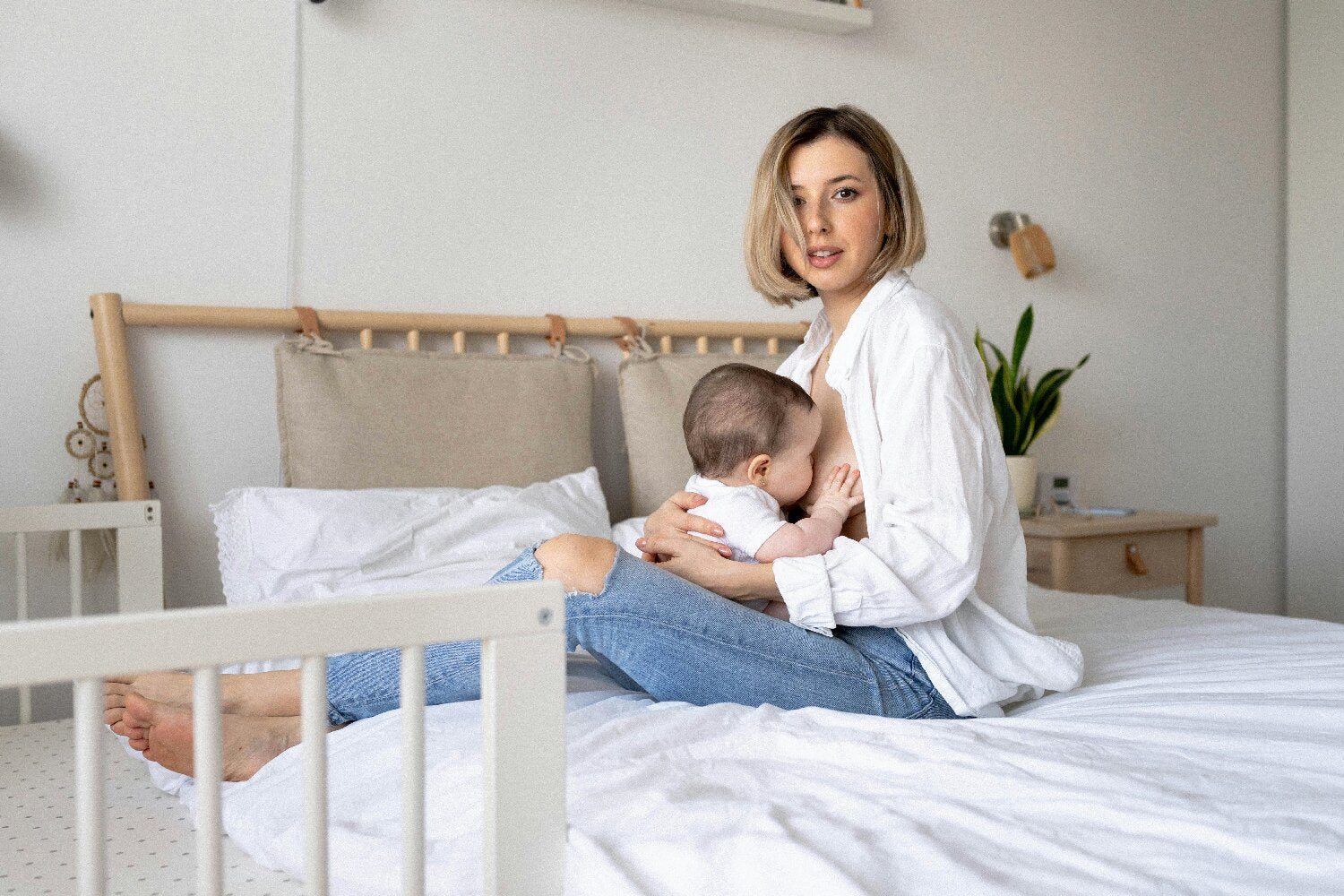Home
Pregnancy & Breastfeeding Tips for New Moms: Preconception, Pumping & Parenting Support
Pumping Tips | Does Pumping Hurt as Much as Breastfeeding?

Pumping Tips | Does Pumping Hurt as Much as Breastfeeding?
If you’re a breastfeeding mom, you may have decided to pump as well so that your breasts don’t become engorged. This is a great idea for many reasons, but if you’ve ever asked yourself, does breast pumping hurt, the answer is, “sometimes.” Over 60% of all breastfeeding women who also pump experience some type of pain and discomfort, but the good news is that it’s easy to avoid this if you know how.
What Are the Main Causes of Pain When You Pump?
Let’s cut right to the chase and get into the reasons why you may experience nipple pain after pumping. Breastfeeding and pumping are two different things, and if you’re getting sore nipples from pumping, there are two main reasons this might be happening. First, you may be using the pump incorrectly; and second, you might be using a pump shield or flange that isn’t the right size.
The breast shield (flange) is the part of the pump that fits over the nipple, and it comes in many sizes. If your nipples hurt after pumping, your shield may be too small, which can cause the nipple to rub up against its side and cause blisters; or too large, in which case the areola might be pulled in too deep and can start to swell.
When you’re placing the breast shield over your breasts, make sure that it is centered properly so that pain and discomfort do not occur. Most companies offer a total of three different sizes for the shield, and they’ll provide you with some assistance so you can purchase the right size in the end. In addition, if the suction strength is too strong and you start to feel pain or discomfort, it can eventually cause pain and even damage to the nipples.
This being said, while getting nipple damage from pumping your breasts does happen, it can easily be avoided if you follow a few simple rules. If you’re pumping and experiencing pain at the same time, it’s best to stop and try to figure out what is wrong before going any further. This is not a “no pain, no gain” moment. A little soreness in the beginning is acceptable; a lot of pain even after you’ve been pumping for a while is not.
What to Do About Sore Nipples When You’re Pumping
Now that you know a little more about the reasons for soreness to the nipple after pumping, let’s talk about some of the things you can do to avoid this scenario so your breasts don’t hurt as much.
They include the following:
- Remember not to turn the suction up too much; it should be as strong as necessary without causing you any pain. Keep in mind that the battery-operated breast pumps tend to cause more pain than both manual and electric ones. If you’re using a battery-operated pump, you may want to switch to another type.
- Always take care of the problem if your breasts are engorged. When they’re engorged, pumping (and breastfeeding) is likely to be more painful. Getting sore nipples pumping your breasts may be the result of engorged breasts. If this happens, try expressing as much milk as possible with your hand, then massaging the breasts to help them feel better. If you express by hand, try to get as much milk out of the breasts as possible before going any further.
- If you notice an extreme amount of pain, it’s possible that you may have either blocked ducts or a breast infection. An infection usually requires an antibiotic, and both of these problems can be diagnosed by your doctor.
- Remember that the problem may be due to breastfeeding itself. In the beginning, your breasts being sore as you nurse or pump is not that unusual. If it continues, however, or it becomes unbearable, a trip to the doctor may be necessary. In short, it should never be extremely painful to nurse or pump.
As you get better at knowing what to do and what to look for, your pumping sessions should begin to get a lot more comfortable for you. If the problems continue, always call your doctor.
When Things Get Serious
Sometimes more serious problems can result, including nipple bruising from pumping or even damage to the breast tissue itself. Some of the signs of breast tissue damage from pumping include:
- Decreased milk supply
- Blisters, fissures, or cracks on the nipple area
- Engorgement that doesn’t go down when you express milk
- Unusual or extreme pain
- Redness around the nipples
- Breasts that are starting to swell or which have lumps in them
You know your body better than anyone else. If you experience a lot of pain, swelling, and discomfort as you pump, it’s time to talk to your healthcare professional. While you can do certain things to make these problems go away, if this doesn’t work, your doctor should be notified. Even if the pain isn’t that severe, if you feel like you should contact your doctor, then go ahead and do it.
Conclusion
If you’ve ever wondered, does pumping hurt, the answer is yes, sometimes it does. The thing is that the longer you pump and the more you know about the process, the less likely it is that your pain will last. If you use the pump correctly and make sure you’re using a breast shield that is the right size, this should take care of most of these problems so that you can get back to pumping and breastfeeding your baby.
Share


